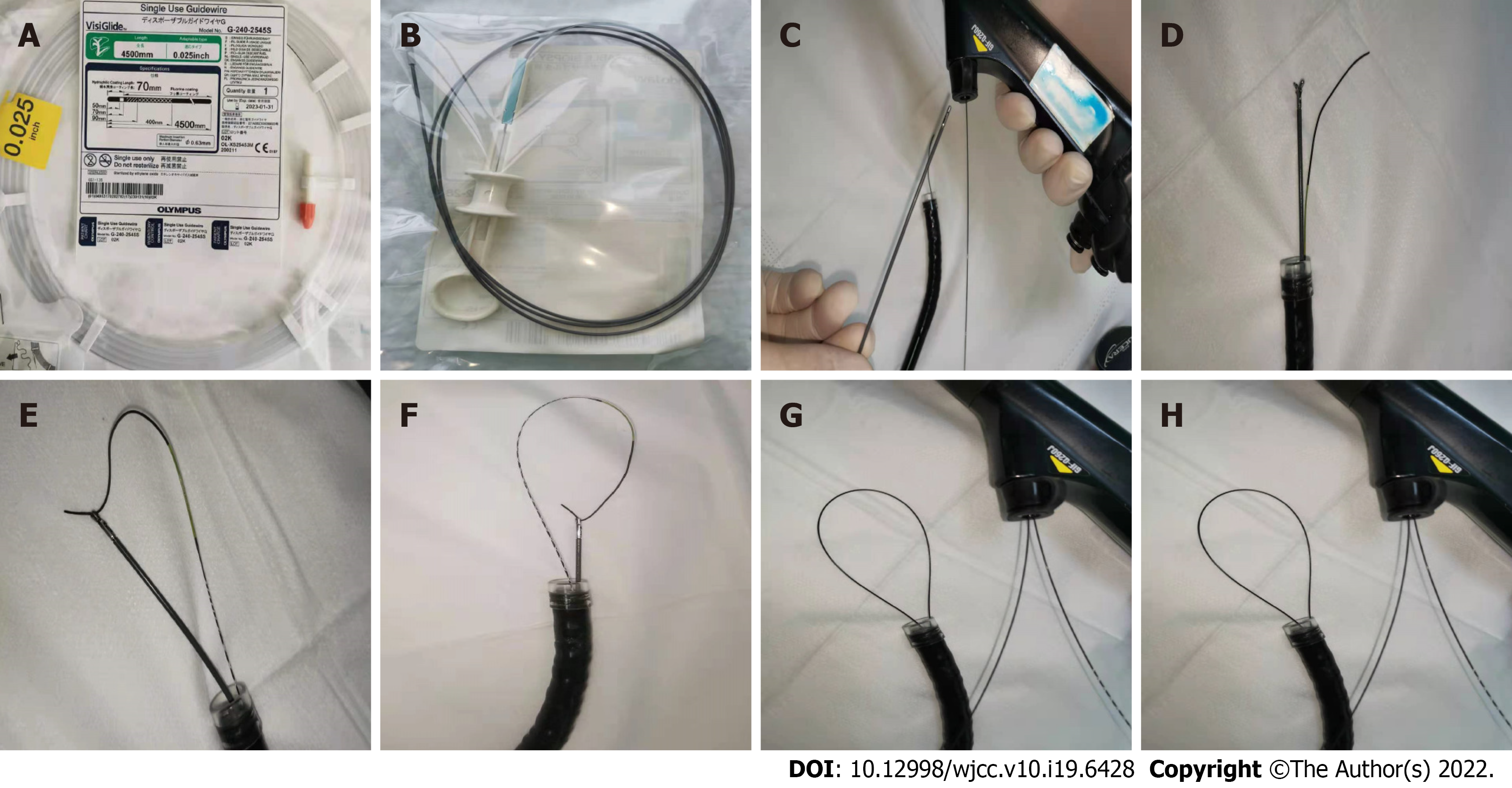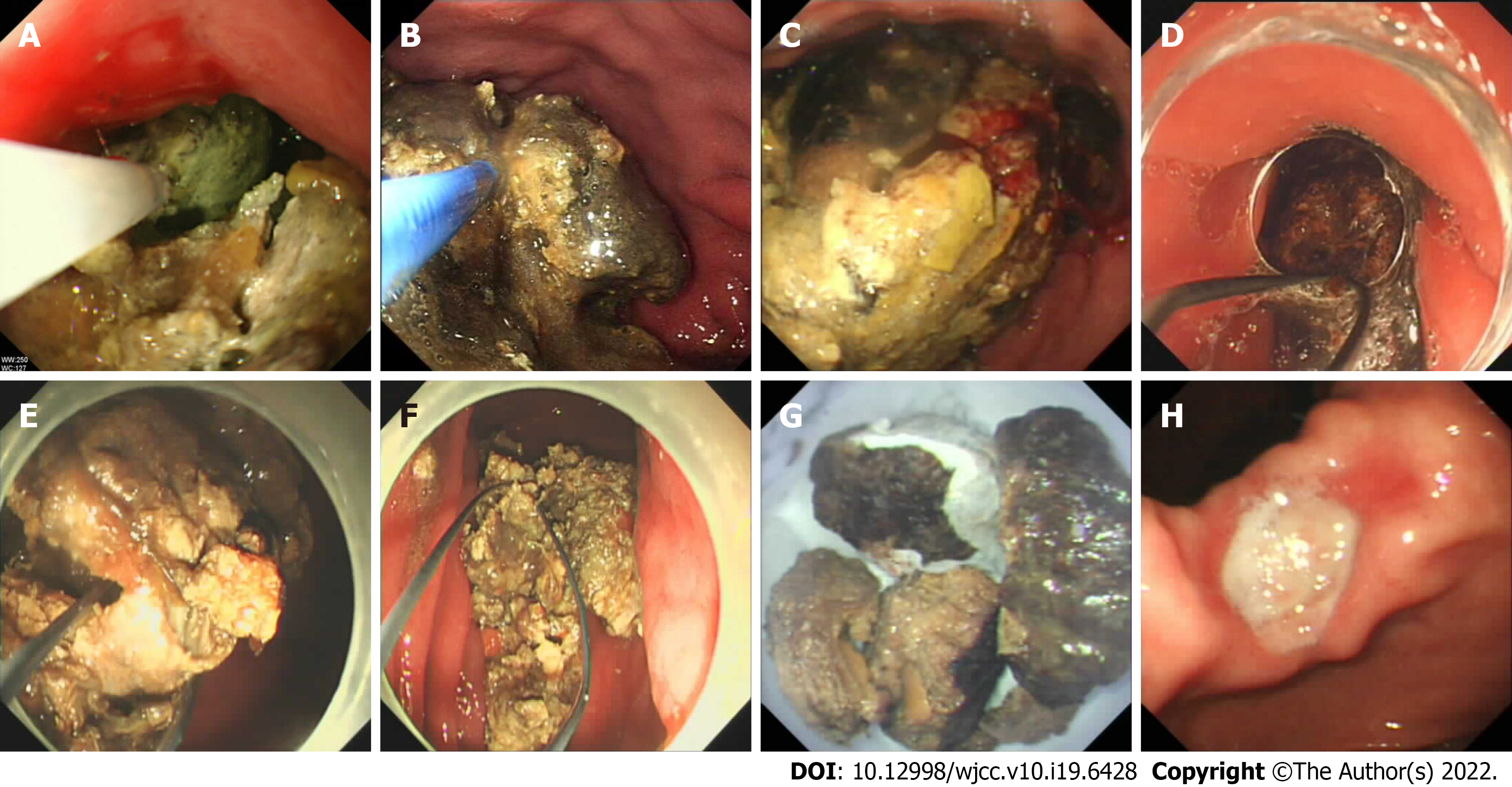Copyright
©The Author(s) 2022.
World J Clin Cases. Jul 6, 2022; 10(19): 6428-6436
Published online Jul 6, 2022. doi: 10.12998/wjcc.v10.i19.6428
Published online Jul 6, 2022. doi: 10.12998/wjcc.v10.i19.6428
Figure 1 Generation of the wire loop snares.
A: A 0.025-inch diameter guidewire (Single-Use Guidewire; Olympus, Tokyo, Japan); B: An ultrafine endoscopic biopsy forcep (FB-231K; Olympus); C: The guidewire is pushed into the biopsy channel, and biopsy forceps is inserted into the biopsy channel afterward; D: The guidewire and biopsy forceps are passed through the endoscopic channel, and the front end of the gastroscope is covered by a transparent cap; E: The guidewire is passed through the lateral orifice at the head end of the biopsy forceps; F: The biopsy forceps are closed to clamp the guidewire; G: The biopsy forceps are pulled back until the guidewire is pulled out of the biopsy channel. During the procedure, the guidewire is delivered into the biopsy channel synchronously to keep an “O” shape of the loop snare extending from the biopsy channel; H: A guidewire loop snare with a variable diameter.
Figure 2 Endoscopic treatment of a persimmon stone.
A and B: A gastric persimmon stone grasped with a foreign body plier (A) and with a traditional snare (B); C: Large gastric persimmon stones observed during endoscopy; D: After covering the front end of the gastroscope with a transparent cap, the guidewire loop is prepared and returned into the transparent cap to enter the stomach; E: The diameter of the guidewire loop snare is adjusted according to the diameter of the gastric persimmon stone. Both ends of the guidewire are then pulled back and forth, after which the stone is cut into small pieces by tightening the guidewire loop snare; F: Following repeated excision, the huge stone is cut into small pieces; G: The small pieces of persimmon stones are removed from the stomach; H: The entire stomach is carefully observed after removal of the stone, with discovery of a gastric ulcer in the incisura angularis.
- Citation: Xu W, Liu XB, Li SB, Deng WP, Tong Q. Self-made wire loop snare successfully treats gastric persimmon stone under endoscopy. World J Clin Cases 2022; 10(19): 6428-6436
- URL: https://www.wjgnet.com/2307-8960/full/v10/i19/6428.htm
- DOI: https://dx.doi.org/10.12998/wjcc.v10.i19.6428










